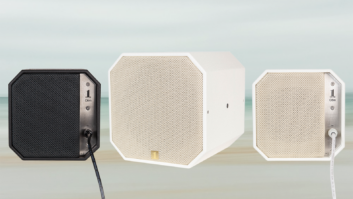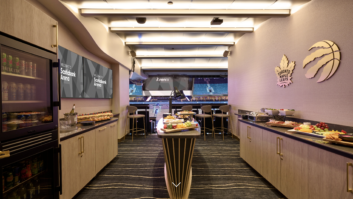
For sure, 2013 was a challenging year for projector manufacturers. “According to PMA Research, the expected result for mainstream projectors will be a decline in volume of about 5% for 2013,” notes Bob Raikes, managing director of displays consultancy Meko (pictured). “That’s a sharp contrast to the large flatpanel market, which is seeing good year-on-year growth – around 20%, according to Meko’s DisplayCast service for Europe, although we think 2014 may be a little slower.”
That overall slight decline, however, inevitably masks a more complex truth. “It was a steady year for us in projector sales, with about 10% growth on the previous year,” says Roland Dreesden, managing director of integrator Reflex. “The majority of the uplift came from higher education projects – mainly in lecture theatres.”
“The projector business was good for us, because we had high-end sales,” echoes Greg Jeffreys, managing director of projection solutions specialist Paradigm AV. “There are still important parts of the market – like simulation – where the image needs to have defined parameters such as luminance, contrast, resolution, size, aspect ratio, shape and so on, where projection is uniquely placed to deliver the solution.”
It’s no coincidence that both Reflex and Paradigm have seen growth in markets that demand high image quality, high brightness – and where there is significant value for the integrator to add. As Raikes confirms: “High-end projectors are doing well. For very large areas, projection remains a cost-effective way of presenting digital content.”
The consensus in the industry is that the small decline in projector sales has been primarily in those market areas where flatpanel display (FPD) technology can deliver a similar image to projection – but often more conveniently and more cost effectively. Projector manufacturers are not standing still, however.
“Projection certainly has a place in the market,” believes Steve Gore-Browne, group technical manager, display technologies at integrator Saville AV. “The quality, life and running costs of even basic projectors are such now that they really do provide end users with the most ‘bang for their buck’. You can have a 2m-diagonal 720p wide screen with a colour-accurate image on a meeting room wall for as little as £500. Flatpanels cannot offer this and, over multiple rooms, the cost savings are quickly evident. The size of the flatpanel display needed for an average room is, almost always, underestimated by clients.”
Certainly, projector manufacturers are rising to the challenge. The last 12 months have seen some exciting developments in three key areas: cost of ownership, resolution and connectivity.
Of these, perhaps the most significant is cost of ownership – and, specifically, the issue of the regular replacement of expensive lamps, an annoyance that has plagued projector users throughout the history of the technology. It’s an issue thrown into greater relief by the fact that cost of ownership of a flatpanel is virtually zero.
The projector manufacturers’ response has been to bring to market alternative illumination technologies. “Laser and LED were probably the most exciting developments in the market during 2013,” says Chris Chinnock, president of market researcher Insight Media.







